Nowadays, most parents think that it is a better choice to hold their newborn baby in their arms instead of putting them in the backseat. Well, I am here to tell you that neither one of those options is safe at all because they both pose a high risk to the newborn child. Instead, what you need to do is get a car safety seat for your newborn child. It is the one and only safest option for your newborn baby to protect him/her, in case your car comes in contact and collides with another car or a wall.
If you want to keep your newborn child safe during every single car ride, then a car safety seat is something that you must buy soon and get it up and well-fitted as soon as possible. Now, the main question that arises is whether should a newborn car seat be rear-facing or front-facing.
Significant decision for parents and the safety of their infants
Now for those of you who are confused, rear-facing means that the child’s back will be facing the back of the passenger seat meaning that someone seating in the car back seat will be in face-to-face contact with the child sitting on the car safety seat as it is rear facing. A lot us might think that rear-facing car safety seat is a good option while the rest if might think the opposite which is thinking that a front-facing car safety seat is a better option.
While both have their perks and drawbacks, we will be breaking them both down precisely so that you have a clear knowledge on which option might be better for you between rear facing car safety seat and front facing car safety seat. Buckle up and let us get down to cracking it up for more information.
Now, why should a parent need to make a decision between putting the car safety seat to be rear-facing or front-facing? Well, for starters, they are both completely different as a child sitting on a rear facing car safety seat will only be able to see the outside environment through the side windows and can also easily look at those sitting in the backseat, as he/she will be facing them. However, a child sitting on a front facing car safety seat will be looking straight outside through the windshield and will be able to see parts of the driver and the passenger as he/she cannot see their full faces.
Understanding the importance of Infant car seats
Now, most parents will look at a car safety seat and think that it’s just an extra seat to place your newborn child but they could not be more wrong. A car safety seat is not just another extra seat but also a seat that comes with all kinds of protection in case your car comes in contact with another car and causes an accident. A car safety seat is equipped with such safety precautions and will make sure to protect the newborn child from every single angle at all times whether the car gets into an accident or the driver brakes the car very hard or even when someone accidentally slides across the car seat and hits the car safety seat due to impulse while turning the car.
Without a car safety seat, your newborn child will be vulnerable to all kinds of attacks from all sides since there isn’t anything protecting her from all kinds of danger. If, for instance, a random car hits your car from the left side, then there won’t be anything that will be able to keep your newborn child in one safe position as he/she will fly off somewhere inside, worst case scenario would be that she could fly off the car and fall somewhere outside the car and die.
This is not a good situation at all since newborn babies are very brittle and vulnerable so they are susceptible to heavy injuries and if they are not taken care of properly, then they could easily die and we don’t want that to happen. Therefore, it is better to be safe than sorry.
However, with a car safety seat, your newborn child will be strapped into it tightly and comfortably and since the car safety seat is tightly and perfectly adjusted onto your car seats, there won’t be any worries about your newborn child’s safety since a car safety seat is doing it’s work. With a car safety seat, your newborn will be protected from all sides while being able to sit and enjoy it comfortably since not only are they equipped with all kinds of protective materials, but they are also equipped with all kinds of comfortable materials so that during long rides, the baby does not get uncomfortable on the car safety seat.
Which way should newborns face in car?
Newborns should be placed in a rear-facing position in a car. Rear-facing car seats are considered the safest option for infants and young children. This orientation provides better protection for a baby’s head, neck, and spine in the event of a collision.
Placing the car seat in a rear-facing position ensures that the force of a crash is distributed more evenly across the child’s body, reducing the risk of injury. It also provides additional support for the baby’s developing neck and head.
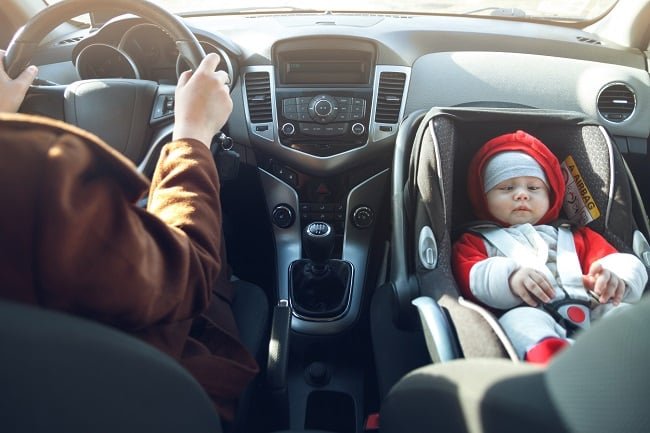
Always follow the guidelines provided by the car seat manufacturer and local regulations to ensure proper use and installation of the car seat for your newborn.
Rear-Facing Car Seats for Newborns
When you see pictures of car safety seats, you will see that most them are usually adjusted on the car backseats as that is the most common method of adjusting a car safety seat. That type of adjustment is called a front facing seat. However, the one we will be talking about is rear facing car seats and it a bit of a different type of adjustment. A rear facing car safety seat is adjusted by putting the back of the car safety seat against the back of the passenger or the driver’s seat.
This way the car safety seat is supported by the back of the passenger’s or the driver’s seat but you will need to make sure that it has been adjusted and tightened perfectly so that it isn’t loose in any way. If your rear facing car safety seat is loose, then when the car is in motion, the car safety seat will keep on rocking and might make the baby dizzy, which could lead to her vomiting and making a mess inside the car.
If you decide to use the rear facing car safety, then you need to follow some safety guidelines to make sure that you aren’t causing any kind of harm to the baby.
- First of all, you need to make sure that the harness straps that are used to strap the newborn child in are either below the child’s shoulder or at the child’s shoulder. Without these straps, the newborn child won’t be
- The harness straps are very tight so you must not grasp them in any case as then they might get deformed as become loose.
- You need to make sure that the chest clip is properly secured and it is placed at the armpit level.
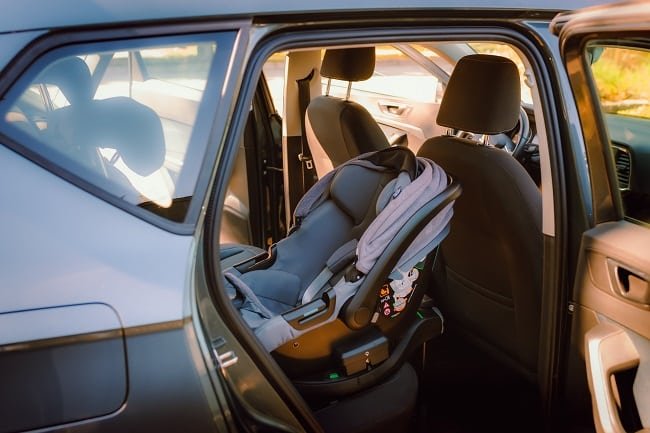
One of the benefits of rear facing car safety seat is that, when an accident occurs, it will manage to take in most of the crash force whilst still managing to support the head, spine, and neck safely from any kind of irregular bumps or hits. This counters the forward facing car safety seat as when an accident from the front the side of the car and the newborn child is sitting on the forward facing car safety seat, they will hurl front for a quick second, and when they reflect back, their head, neck, and spine hit the back of the car safety seat, which could possibly lead to long time injuries.
According to statistics, it has been proven that, in the study of 100 car collisions, only 8 of the children were badly injured while the rest 92 children were in good condition. Now, you can understand that how safe rear facing car safety seat is.
Do newborn car seats have to be rear facing?
Yes, newborn car seats are typically designed to be rear-facing. Rear-facing car seats are considered the safest option for infants and young children. They provide better protection for a baby’s head, neck, and spine in the event of a collision.
The American Academy of Pediatrics (AAP) recommends that infants and toddlers should ride in a rear-facing car seat until they reach the maximum weight or height limit allowed by the car seat manufacturer. This is usually around 4 years of age or when they outgrow the specific rear-facing limits of their car seat.
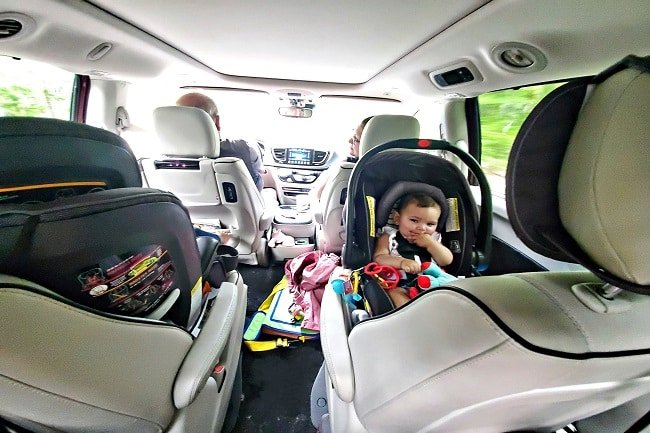
Rear-facing car seats distribute the force of a crash more evenly across the child’s body, reducing the risk of injury. They also provide additional support for the baby’s neck and head, which are still developing and more susceptible to injury.
It’s important to consult the specific guidelines provided by the car seat manufacturer and local regulations to ensure proper use and installation of the car seat for your newborn.
Where is the safest place for rear facing car seat?
The safest place for a rear-facing car seat is in the back seat of the vehicle. The middle of the back seat is generally considered the safest position because it offers the most protection from side-impact crashes. Placing the car seat in the middle also reduces the risk of injury from the intrusion of objects in the vehicle during a collision.
However, not all vehicles have a designated middle seat with proper safety features for installing a car seat. In such cases, the rear-facing car seat can be installed in either of the outboard seats (the left or right side of the back seat). It’s important to consult both the car seat manufacturer’s instructions and the vehicle’s owner’s manual for specific guidance on proper installation and placement.
Regardless of the seat position, ensure that the car seat is securely and tightly installed following the manufacturer’s instructions. Double-check that the seat is correctly reclined to the appropriate angle for a newborn to ensure proper support for their head and neck.
Front-Facing Car Seats for Newborns
While people might think that rear facing car safety seats are a better option, they are half-educated because they have no idea about the benefits of front facing car safety seats. Front forward car safety seats have the biggest advantage and that is the easy physical and visual access. When you install a rear facing car safety seat, the baby will be facing the car’s backseat and the car safety seat will be attached to the back of the driver’s or the passenger’s seat.
This could be a problematic situation as it will be hard for both parents to reach their newborn child and take care of it and they won’t be able to get a clear look at the baby all the time. However, if your newborn child is seated on a forward facing car safety seat, then he/she will be easily accessible to both the parents who are sitting in the front seats and whenever they look back, they can easily take a visual look at their newborn child.
One of the concerns with a rear facing car safety seat is that, when a child is placed in rear facing car safety seat all alone in the back, then he/she might get bored easily and crave the parent’s attention, as they don’t have anyone in the back to talk to them nor play with them. This concern can be wiped away with a forward facing car safety seat as when a child is placed on to the forward facing car safety seat, he/she can easily look at their parent’s figures and call them to either play or talk to them and won’t get bored so easily.
If you are going to go on long trips, then a forward facing car safety seat is an ideal choice when compared to a rear facing car safety seat since you and the passenger will both have easy physical and visual access to the newborn child and tend to his/her needs if need be.

Before you buy a car safety seat, you need to do as much research as you can possibly and get all the information you need related to car safety seat so that when you are about to purchase, you have all the knowledge that you need. There won’t be just one kind of car safety seat. There will be multiple kinds of car safety seats and you need to make sure that you pick out the proper one for your child. You need to make sure that the car safety seat is in perfect condition as getting a faulty one will put your newborn child’s life at risk.
They might be a bit costly but you need to see that you are buying equipment that will protect your newborn child’s life. The safety of the newborn child is everyone’s top priority and that should be met no matter what it takes. Take a look at the table below and see the child’s physical difference for both these seats:
| Diffence | Rear Facing Car safety seat | Forward Facing car safety seat |
| Age | 1-48months old | 4 to 7 years old |
| Weight | 10-15 kilograms | 15-25 kilograms |
| Height | 30 inches | 43 inches |
When can a baby go in a forward-facing car seat?
The American Academy of Pediatrics (AAP) and other safety organizations recommend keeping children in a rear-facing car seat for as long as possible, until they reach the maximum weight or height limit allowed by the car seat manufacturer. The AAP previously recommended keeping children rear-facing until at least 2 years of age, but their latest guidelines state that children should remain rear-facing until they outgrow the specific rear-facing limits of their car seat. So now the recommended age is 4 years.
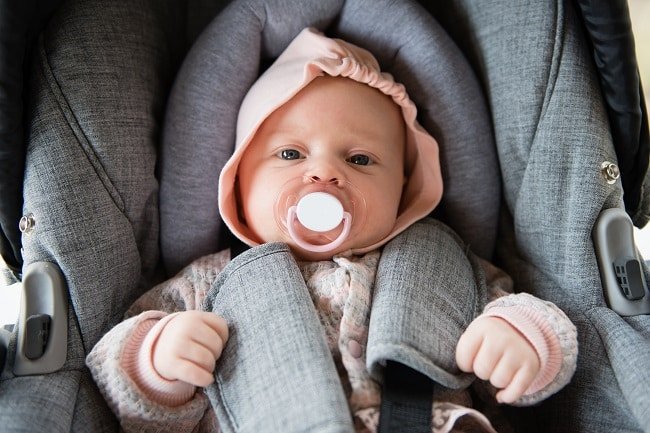
The exact age at which a child can transition to a forward-facing car seat varies depending on their growth and the specific car seat’s weight and height limits. It’s important to consult the car seat manufacturer’s instructions for the recommended transition point.
However, it’s worth noting that keeping a child rear-facing beyond the minimum requirements is still encouraged as it provides better protection for their head, neck, and spine. Forward-facing car seats are generally less protective in the event of a crash compared to rear-facing car seats. It is advisable to keep children rear-facing for as long as possible within the limits of their car seat.
Can I put my 1 year old in a forward facing car seat?
The current recommendations from the American Academy of Pediatrics (AAP) and other safety organizations suggest keeping children in a rear-facing car seat until they outgrow the specific rear-facing limits of their car seat. While the previous guideline was to keep children rear-facing until at least 2 years of age, the emphasis now is on keeping children rear-facing for as long as possible.
If your 1-year-old has not yet outgrown the rear-facing limits of their car seat, it is recommended to continue using a rear-facing car seat. These limits are typically based on the weight and height restrictions specified by the car seat manufacturer.
Rear-facing car seats provide better protection for a baby’s head, neck, and spine, as they distribute the force of a crash more evenly across the child’s body and provide additional support. Therefore, it is generally considered safer to keep children rear-facing for as long as possible within the limits of their car seat.
Conclusion:
Now that we have wrapped things up, we have now concluded on whether a newborn child should be sitting on a rear-facing car safety seat or a front-facing car safety seat. Rear-facing car safety seats can provide better head, neck, and spine support for the child during an accident whereas with a front-facing car safety seat, the parents sitting in the front seats will have easy physical and visual access to him/her. This is a hard choice but you need to make the right choice depending on one you think will be better for your newborn child.
If you are unable to make a decision, then you can consult professionals such as pediatric associations and car safety experts, as they are well-versed in this topic. However, you must not skip out on buying a car safety seat as it will put the newborn child’s life at a high risk so why be sorry when you can be safe beforehand?
We all face different kinds of problems every day and we at Hacks for Cars try our best to help everyone with their problems and make sure that they leave our site with a smile on their face. We hope that this piece of article was able to educate you on everything that you need to know about rear-facing car safety seats and front-car safety seats for newborn children. If you have any other questions about other problems, then you can refer to our other articles, which might help you.
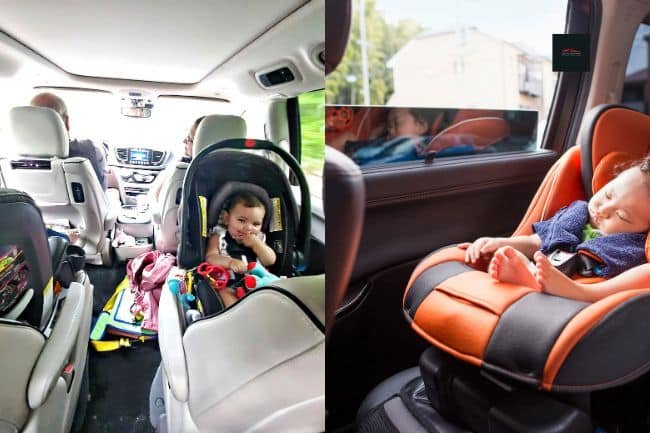
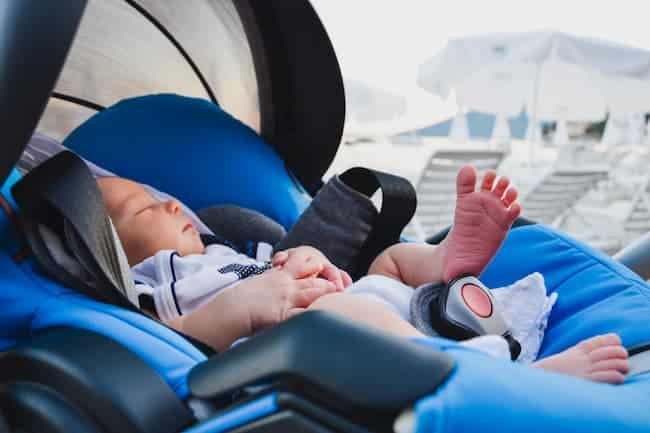
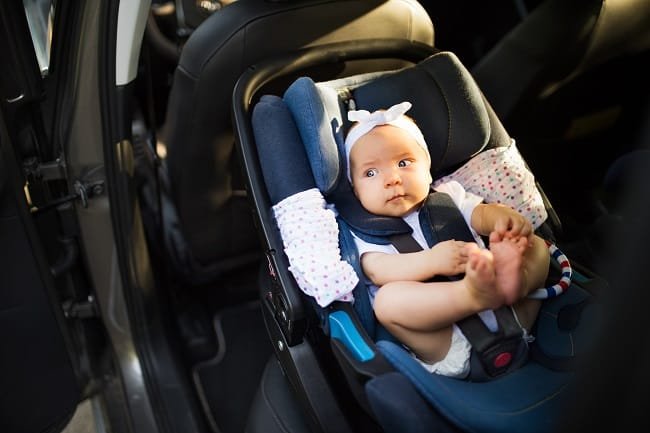
Pingback: Should Newborn Car Seat Be Rear Or Front Facing...